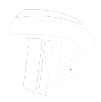1. Improve the high-temperature stability and improve the high-temperature stability. Due to the three-dimensional distribution of polyester fiber monofilament, it has a strong adsorption with asphalt, and it is not entangled. It can absorb too much free asphalt, which increases the viscosity and cohesion of asphalt. At the same time, due to the reinforcement and bridging effect of cross and cross, it reduces the flow performance of asphalt and limits the lateral displacement of aggregate Or flow, effectively improve the stability of high temperature, so that the stability of fiber asphalt concrete has been greatly improved.
 2. Improve the low-temperature crack resistance and the absorption effect of fiber on asphalt, resulting in the increase of the optimal asphalt content in asphalt concrete and the higher asphalt content, so that the fiber asphalt mixture still maintains flexibility and higher tensile strength at – 40 ℃ low temperature, effectively resist the shrinkage stress, enhance the low-temperature crack resistance of the mixture, reduce the generation of temperature shrinkage cracks and prevent them Development of reflection cracks.
2. Improve the low-temperature crack resistance and the absorption effect of fiber on asphalt, resulting in the increase of the optimal asphalt content in asphalt concrete and the higher asphalt content, so that the fiber asphalt mixture still maintains flexibility and higher tensile strength at – 40 ℃ low temperature, effectively resist the shrinkage stress, enhance the low-temperature crack resistance of the mixture, reduce the generation of temperature shrinkage cracks and prevent them Development of reflection cracks.
3. Improve the anti fatigue performance of asphalt pavement under the action of external air temperature environment, under the repeated action of wheel load, when the repeated action of load exceeds a certain number of times, the stress generated in the pavement under the action of load will exceed the structural resistance of strength reduction, causing cracks in the pavement, leading to fatigue fracture damage. After adding polyester fiber, the fiber monofilament in the mixture The uniformly distributed reinforcement increases the stiffness modulus and improves the fatigue resistance of asphalt concrete.
4. Improving the water stability of asphalt pavement means that the asphalt pavement undergoes the repeated action of traffic load and temperature rise and contraction under the condition of water. The addition of polyester fibers increases the thickness of the asphalt film, reduces the strength of water replacing asphalt, and reduces the amount of water permeated into the asphalt concrete. In addition, the adsorption of the fiber increases the viscosity of the asphalt, improves the cohesive force of the asphalt and aggregate, and strengthens the ability of the interface film to resist the water stripping effect in the asphalt mixture, thereby improving the asphalt. Water stability of the mixture.


